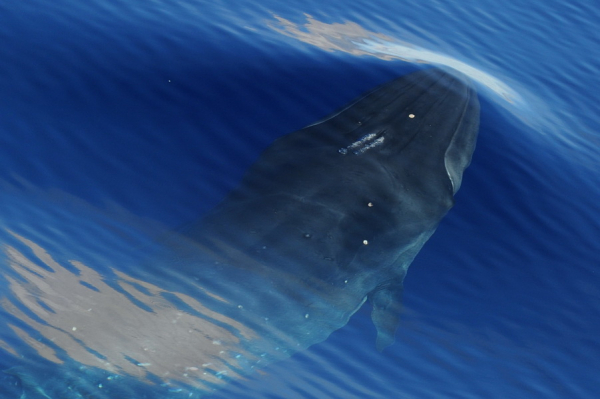The fifth IWC-POWER research cruise sets sail
At the beginning of July, the IWC-POWER research cruise set sail to survey cetaceans in an area of the North Pacific which has not been studied for decades. Now in its fifth year, the IWC-POWER programme is an international collaboration which aims to build understanding of the abundance and stock structure of a number of key species. This year’s cruise will focus primarily on Bryde’s, fin and sei whales, and involves scientists from the US and Britain, as well as Japan which also generously provides the vessel and crew.
The IWC-POWER research cruises are an important component of the IWC’s work, and the successor to the Southern Ocean programme (IWC-SOWER) which ran in the Antarctic for over thirty years and surveyed the complete circumpolar area south of 60°S three times.
IWC-POWER is a long term programme which is expected to run for more than 10 years. Detecting trends in numbers of long-lived animals such as whales takes a long time. The overall objective is to provide information which will allow scientists to determine the status of populations of the large whales found in North Pacific Waters. This information will provide the scientific background to assess the need for conservation and management action and, if actions are necessary, monitor their effectiveness.
Collaboration is fundamental to the success of the programme. In addition to the major contribution of Japan, the scientists’ expenses and specialist equipment are funded by the IWC. So far scientists from Japan, the Republic of Korea, the USA, the UK and Mexico have participated in the fieldwork. In addition, scientists from Australia and Europe are members of a specialist IWC-POWER steering group.
The duration of each cruise is approximately 60 days. This is the maximum operational period of the vessel before refueling and resupplying is necessary. By the time the vessel has travelled to and from the area of study, approximately 35-45 days remain for research. The scientists on board work from one hour after sunrise to one hour before sunset, making the most of the opportunity and the daylight. Between 70 and 90 nautical miles are covered each day that the vessel is in the research area.
One major component of research undertaken on the cruise is the collection of sightings data to allow determination of what species of whales and dolphins are present, where they are found and the estimation of how many of each species there are. Scientists also collect biopsy samples from some animals. These can be analysed in several different ways to look at relationships amongst animals, what sex they are, levels of pollutants, information on their diet, identification of individuals (‘fingerprinting’) and even information on their reproductive state. For many species, photographs can be used to identify individuals. When collected over several seasons, these can provide information on movements, reproduction and even how many there are. Photographs can also be used to examine the health of animals and evidence of interactions with ships or fishing gear.
The POWER cruises also work to address wider objectives, for example, collecting data on marine debris that contributes towards modelling the predicted movement of marine debris from the 2011 Tsunami.
Click here to be taken to the POWER image gallery.

